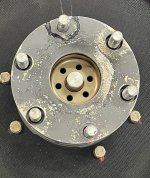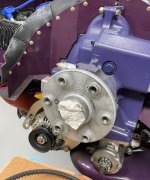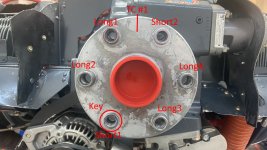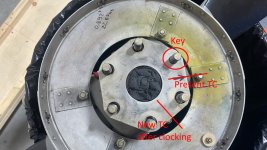Walt
Well Known Member
So just out of curiosity I contacted Les Dowd at Hartzell which is my go-to guy for propeller technical stuff. Les reviewed this thread and had the following comments. Copied and pasted with his permission:
"I read the thread and want to point out a few things.* 1.* The propeller that was out of static balance is shown in the photos with the spinner aft bulkhead and forward bulkhead installed.* When we do the static balance at the factory, there is no spinner components installed…* 2.* I tend to agree with your comment about balancing equipment and the person using it…* I’ve run into many techs that have minimal amount of understanding of what they’re doing during the dynamic balance.* I’ve done troubleshooting on vibration problems only to discover a tech installed the dynamic balance weights 180 degrees from where they should be…* 3.* Mass can shift slightly with blade angle and after break-in.* A dynamic balance solution at 2400 on the ground at zero airspeed can shift when inflight at 150 kts (mass shifts with blade angle increase).* This can be especially true with composite blades because the “vertical balance” of the blade can be dramatically different at low blade angle vs. high blade angle.
In general, yes, a dynamic balance should account for discrepancies in static balance.* The static balance is done to get you close to the solution.* The dynamic then corrects for the engine-propeller-spinner assembly as a unit and during operation.* The problem with relying on the dynamic balance only is, the solution may require a very large amount of weight, so much so that you would have to “punt” and be forced to do a static balance to get in the ballpark.* In theory, the dynamic is done after all the big components are statically balance already and you are “fine tuning” the solution.
When troubleshooting vibration, I really think you are guessing what the problem is without a spectrum analysis.* When people complain about cabin vibration, I firmly believe the only way to find the source is to have the sensor mounted in the cabin when getting that spectrum
I also wanted to point out that re-indexing a prop is not officially approved, endorsed or encouraged by Hartzell Propeller Inc. *It is one solution to a 1/2 order vibration problem that I’ve found works if all other attempts don’t work. Those that do it are moving into the Experimental category on their own.*"
"I read the thread and want to point out a few things.* 1.* The propeller that was out of static balance is shown in the photos with the spinner aft bulkhead and forward bulkhead installed.* When we do the static balance at the factory, there is no spinner components installed…* 2.* I tend to agree with your comment about balancing equipment and the person using it…* I’ve run into many techs that have minimal amount of understanding of what they’re doing during the dynamic balance.* I’ve done troubleshooting on vibration problems only to discover a tech installed the dynamic balance weights 180 degrees from where they should be…* 3.* Mass can shift slightly with blade angle and after break-in.* A dynamic balance solution at 2400 on the ground at zero airspeed can shift when inflight at 150 kts (mass shifts with blade angle increase).* This can be especially true with composite blades because the “vertical balance” of the blade can be dramatically different at low blade angle vs. high blade angle.
In general, yes, a dynamic balance should account for discrepancies in static balance.* The static balance is done to get you close to the solution.* The dynamic then corrects for the engine-propeller-spinner assembly as a unit and during operation.* The problem with relying on the dynamic balance only is, the solution may require a very large amount of weight, so much so that you would have to “punt” and be forced to do a static balance to get in the ballpark.* In theory, the dynamic is done after all the big components are statically balance already and you are “fine tuning” the solution.
When troubleshooting vibration, I really think you are guessing what the problem is without a spectrum analysis.* When people complain about cabin vibration, I firmly believe the only way to find the source is to have the sensor mounted in the cabin when getting that spectrum
I also wanted to point out that re-indexing a prop is not officially approved, endorsed or encouraged by Hartzell Propeller Inc. *It is one solution to a 1/2 order vibration problem that I’ve found works if all other attempts don’t work. Those that do it are moving into the Experimental category on their own.*"
Last edited:








